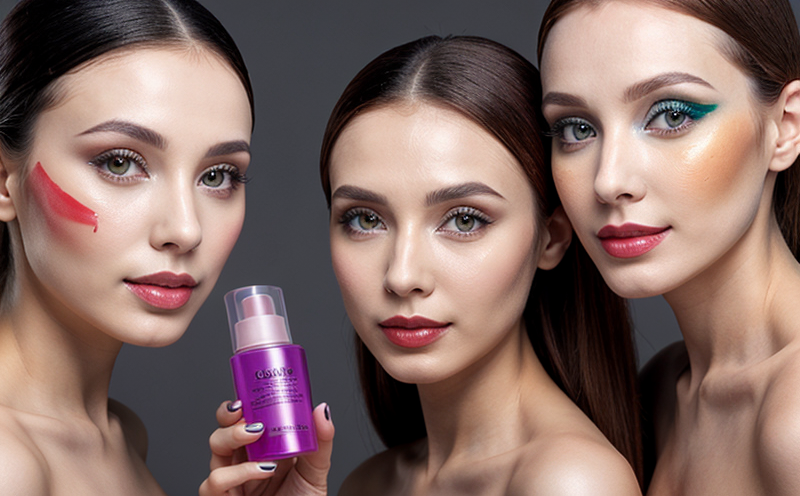Developmental Toxicity Testing for Cosmetic Products
The developmental toxicity testing of cosmetic products is a critical step in ensuring that new formulations do not pose risks to human health, particularly during fetal development. This test assesses whether components of cosmetic products can cause adverse effects on the developing embryo or fetus when administered to pregnant animals.
Developmental toxicity testing is essential for compliance with international regulations such as the European Union's Cosmetic Regulation. The regulation mandates that companies demonstrate non-toxicity of their products through rigorous testing before they can be marketed. This service involves a series of tests to evaluate potential risks associated with developmental toxicity.
The primary objective is to identify any teratogenic effects, which are abnormalities in the development of an embryo or fetus leading to malformations or other developmental issues. By conducting these tests early in product development, companies can make informed decisions about ingredient safety and avoid costly delays later in the regulatory process.
Developmental toxicity testing typically involves administering test substances via different routes such as oral ingestion, dermal application, or inhalation. The chosen route depends on how the cosmetic product will be used by consumers. For instance, a lipstick would undergo dermal testing to mimic how it is applied directly onto the skin.
Animal models are commonly used in this type of testing due to their physiological similarities with humans and the ability to control variables more precisely than human studies allow. Rodents like rats or rabbits are frequently selected because they have short gestation periods, which allows for quicker results compared to larger animals like primates.
The process begins by selecting pregnant animals at specific stages of pregnancy based on the route of administration planned for the cosmetic product. Animals receive single doses or repeated doses over several days depending on the test protocol being followed.
Throughout the study, researchers monitor maternal health and behavior alongside fetal development closely. This includes observing birth outcomes, examining physical characteristics such as weight gain during gestation, and assessing overall survival rates both pre- and postnatal periods.
| Stage of Pregnancy | Dose Administration Route | Number of Animals | Monitoring Parameters |
|---|---|---|---|
| Gestation Days 6–15 | Oral Dosing | 25 per group | Fetal Weight, Malformation Rate |
| Pregnancy Days 18–23 | Dermal Application | 20 per group | Mortality Rates, Birth Weight |
| Postnatal Days 4-21 | Inhalation Exposure | 15 per group | Behavioral Development, Growth Rate |
The data collected from these observations form the basis for evaluating potential developmental toxicities. If significant adverse effects are observed at certain doses or routes of administration, further investigation into safer alternatives may be necessary.
Compliance with international standards is crucial when performing developmental toxicity testing. Relevant guidelines include OECD (Organization for Economic Cooperation and Development) tests No. 414 and ISO/IEC 17025, which outline best practices for laboratory operations and test methods.
Scope and Methodology
The scope of developmental toxicity testing encompasses several key areas:
- Evaluation of maternal toxicity
- Determination of teratogenic effects on the fetus
- Assessment of postnatal development
To conduct this test effectively, laboratories must adhere to strict protocols and follow rigorous quality control measures. Here's a brief overview:
- Maternal Toxicity: Monitoring includes assessing maternal body weight changes, food consumption patterns, mortality rates, and clinical signs of toxicity.
- Teratogenic Effects: Fetal examinations focus on external malformations, skeletal anomalies, visceral abnormalities, and other developmental defects.
- Postnatal Development: This phase evaluates the health status of offspring after birth, including growth rates, behavior patterns, and survival statistics.
These evaluations help determine if any component within a cosmetic formulation might adversely affect early life stages. Once completed, detailed reports are compiled summarizing all findings along with recommendations for improvement where applicable.
Why Choose This Test
Developmental toxicity testing is vital for several reasons:
- Regulatory Compliance: Ensures adherence to strict EU regulations and other global standards.
- Risk Reduction: Identifies potential hazards early in the product lifecycle, minimizing risks associated with marketing unauthorized products.
- Patient Safety: Protects consumers by ensuring that all ingredients are safe for use during pregnancy without causing harm to developing fetuses.
- Brand Reputation: Maintains a positive image among stakeholders and maintains consumer trust in the brand.
- Cost Efficiency: Early identification of problematic compounds prevents costly product recalls or withdrawals later on.
In summary, developmental toxicity testing serves as an indispensable tool for safeguarding public health while upholding ethical standards in cosmetic manufacturing practices.
Quality and Reliability Assurance
- Certified Personnel: Our team comprises highly qualified professionals trained specifically in conducting developmental toxicity tests.
- State-of-the-Art Facilities: Equipped with advanced equipment ensuring precise measurements and consistent results.
- Comprehensive Reporting: Detailed reports are provided summarizing all aspects of the test, including raw data and interpretative comments.
- Continuous Training: Regular updates on new methodologies and best practices ensure our expertise remains current.
At our facility, we maintain rigorous quality assurance protocols throughout every step of the process to guarantee accuracy and reliability. From sample preparation to final report generation, each phase is meticulously documented and reviewed by multiple individuals ensuring high standards are met consistently across all projects.





